Increasingly, liquid wallpaper has recently been used to decorate walls, which are applied using various tools such as rollers, brushes and spatulas. Other painting and plastering devices can also be used in the process.
Ready-made mixtures are sold in stores, but many home craftsmen prepare such a coating on their own. If you also wondered how to make liquid wallpaper, then you should know that they can be based on a variety of materials that have no value. This feature can be considered a positive quality, because you don’t have to spend money on expensive components. Another plus is the ability to solve the issue of waste disposal.
What are liquid wallpapers
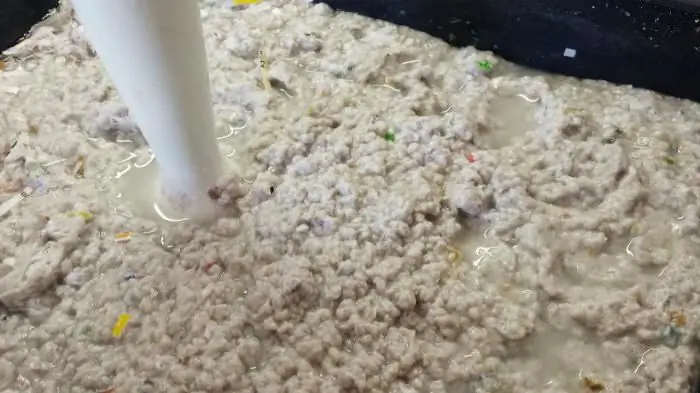
Before deciding how to make liquid wallpaper yourself at home, you should familiarize yourself with the basic properties of this material and understand what it is. These are breathable blends that can be based on fibers:
- silk;
- cellulose;
- cotton.
Among the ingredients is a bonding agent, it can be an adhesive that, when mixed, creates a mass suitable for application to vertical walls. In the end, you should get something like plaster.
Ready mixes are sold in sealed plastic bags. There are instructions on the packages. The bags contain a dry composition of fibers, plasticizing and modifying additives, as well as glue. Liquid wallpaper of this type can be painted in a certain shade or have a neutral color.
If you want to apply a mixture with a certain tint, then you should purchase a white composition, and then give it the desired shade with the help of coloring additives. If you are solving the problem of how to make liquid wallpaper, you should know that mixtures of this type have certain advantages, namely:
- porosity structure;
- the ability to pass steam;
- no odors;
- anti-static properties;
- fire safety;
- lack of ability to absorb odors;
- lack of seams;
- the ability to mask wall defects;
- no need to carefully prepare the surface;
- the ability to repair individual sections if they are damaged;
- the possibility of applying a new layer of wallpaper on top of the old one with a different color;
- easy to dismantle;
- possibility of dyeing in different colors;
Self-made wallpaper frompaper waste
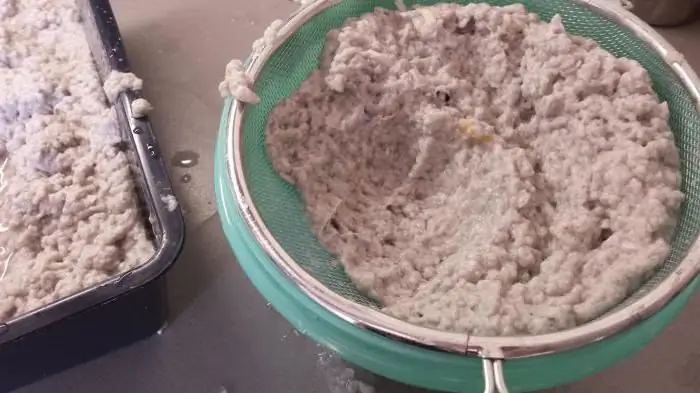
Before you make liquid wallpaper, you should familiarize yourself with several recipes. Some of them involve the addition of decorative ingredients, which allows you to achieve the desired effect. Some components may change.
If the basis is paper waste, then for the work should be prepared:
- any paper;
- dye;
- gypsum;
- PVA glue;
- acrylic plaster;
- water;
- additives.
As for paper, it can be:
- sheets with text;
- books;
- old newspapers;
- packaging wrappers;
- scraps, unnecessary in the household.
When preparing dyes, you may prefer several colors at once. Acrylic plaster can be replaced with Bustilat glue. Quite often, when thinking about how to make liquid wallpaper, home craftsmen do not know what to use as additives. These could be:
- dried seaweed;
- crushed tree bark;
- mica powder;
- yarn;
- sequins;
- crumbs of quartz and granite.
You can also use other - fine-grained stones. The manufacturing process of the base involves the observance of several stages. Dye is added to the finished mixture. After standing, the selected additives are poured. You must shred the paper. The smaller the pieces, the faster the process will go.
Work methodology
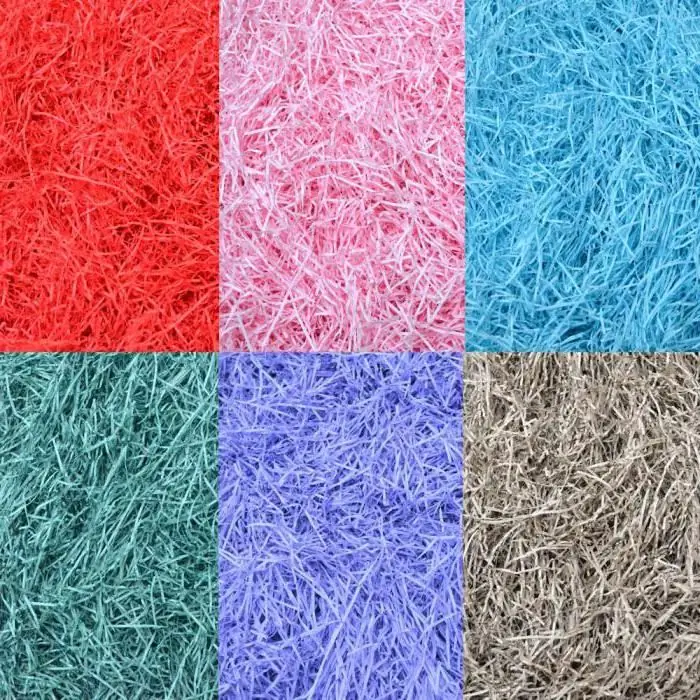
Shredded paper must be placed in a container and poured with water, leaving for 4 hours to soften the material. For a kilogram of raw materials, 5 liters of water will be required. After the mentioned time has elapsed, the paper with water is stirred using an electric drill with a mixer attachment. As a result, you should get a homogeneous mass.
If you are studying the question of how to make liquid wallpaper, you should know that in the next step you need to add glue and dye to the resulting mixture, and then continue kneading. The composition is laid out in a plastic bag or wrapped in a film. In this state, the wallpaper is left for 12 hours to mature.
After the mass is unfolded and kneaded by hand. If you want to use glitter, you will need to combine it with the rest of the ingredients after maturation. Before applying to the surface, the mass is pre-combined with gypsum and mixed again until uniform. The more plaster, the faster the mixture will set and harden. This indicates that it is not worth adding the mentioned component to the entire prepared mass at once.
Production of wallpaper from other fibrous materials
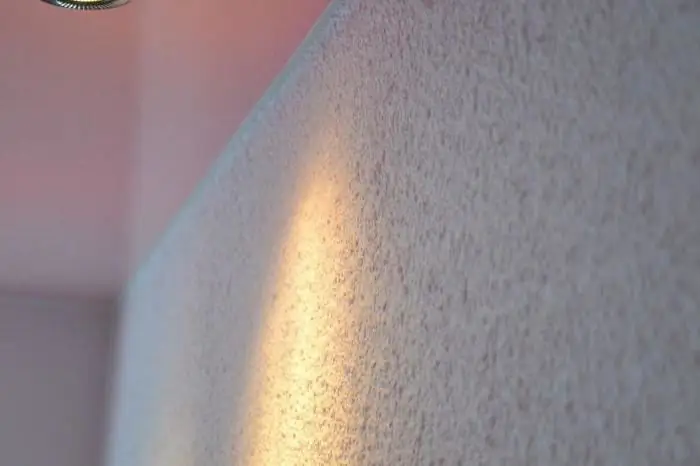
If you are also among those who are thinking about how to make liquid wallpaper, you can use the recipe, which involves the use of fibrous materials. To do this, prepare cellulose or cotton fiber. It can be ordinary wool or Ecowool thermal insulation, which consists ofwood pulp. There should be a lot of material if the decoration is carried out over large areas. This question needs to be thought out in advance.
When using ordinary cotton wool, it is crushed. The procedure is carried out manually, you can use household scissors. Some craftsmen build something like a mixer, which involves the use of an electric drill with a nozzle. A bowl for this can serve as a bucket where the material is placed. The container is well closed with a lid with a hole for the mixer shaft. Otherwise, its elements will scatter around. The lid can be made from thick cardboard.
Alternative options
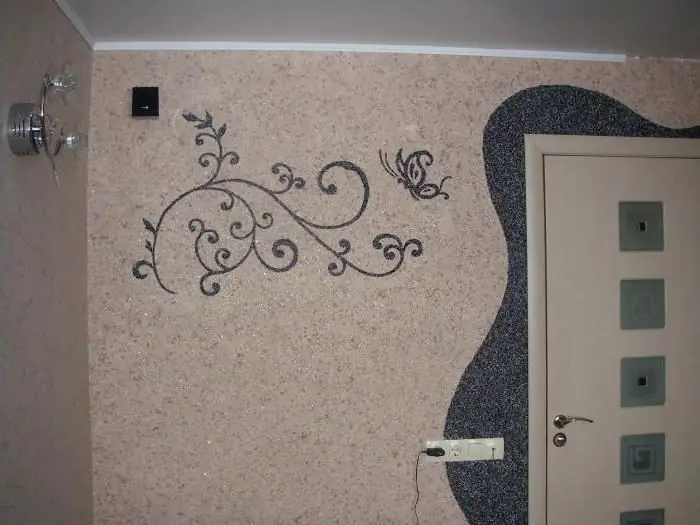
How to make liquid wallpaper at home? This question is being asked today by those who are starting to repair. If you also thought about this, then instead of cotton wool, you can use cellulose, which will become the main material. It can be linen fibers, wool, polyester or synthetic winterizer. The material grinds well. The smaller the particles, the easier it will be to mix them. The mass will be more homogeneous.
You can also use threads made of cotton, wool, a mixture of several components or synthetics. Often needlewomen have a lot of leftovers of unnecessary yarn. You can dissolve old sweaters and sweaters that are no longer in use.
Threads are crushed. This can be done with scissors or a sharp cabbage cleaver, but this will require a wooden base. If, when deciding how to make liquid wallpaper at home, you wantuse this particular method, you should know that grinding work is quite tedious, but the result will exceed all expectations. Colored threads can be used as a warp or addition to paper and fiber pulp.
Binder

Before you make do-it-yourself liquid wallpaper out of paper, you should think about which component will act as a binder. It will hold the fibrous structure together. Bustilat, PVA glue or wallpaper casein glue can be used for this purpose.
You can apply acrylic-based putty. The latter has a specific smell, and also requires dilution with water. Wallpaper on acrylic putty is the most resistant to deformation and abrasion.
Decorative additives
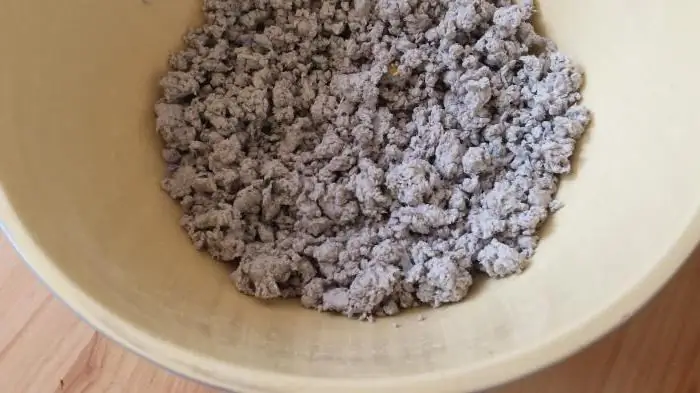
Now you know how to make liquid paper wallpaper, but you should also think about what decorative additives to use. It can be a crumb of minerals, mica or sparkles. Their use depends on what effect you want to get. Moderation is important, do not use multiple additives as this can ruin everything.
Sometimes ingredients are added to liquid wallpaper that prevent the appearance of fungal formations on the walls. You can find such components in hardware stores, they have an affordable cost.
Which dyes to use
Before you make liquid wallpaper yourself, you should think about what dyes you are planningapply. The pigment is added to the wet mixture with simultaneous mixing, this will achieve the desired shade and uniformity. If you want to give the surface an iridescent color heterogeneity, as well as blotches and tone differences, you must proceed as follows: first, the color is added and mixed with the mass until the color is uniform. The second portion is added before applying the composition to the walls, but this time it is not necessary to knead the wallpaper thoroughly. Some areas should remain unmixed.
In closing
If you want to update the room and are thinking about how to make liquid wallpaper yourself, you must first deal with the raw materials. It can be cardboard, paper, fiberboard and even laminate. The material is cut, while the original composition remains almost unchanged. This allows the mass to be recycled many times.
It is important to correctly determine the proportions of paper and water for soaking. When you think about how to make liquid wallpaper at home, you should add 25 liters of water to 40 sheets of A4 1. One sheet will have 30 ml of liquid.






